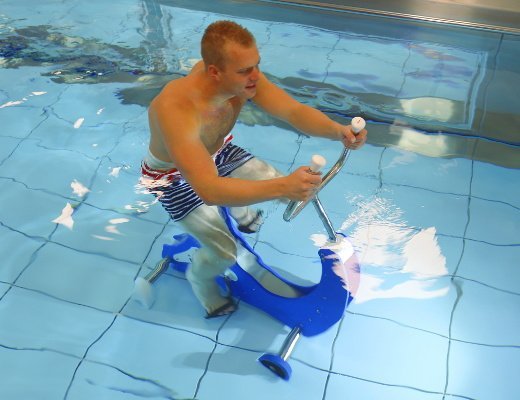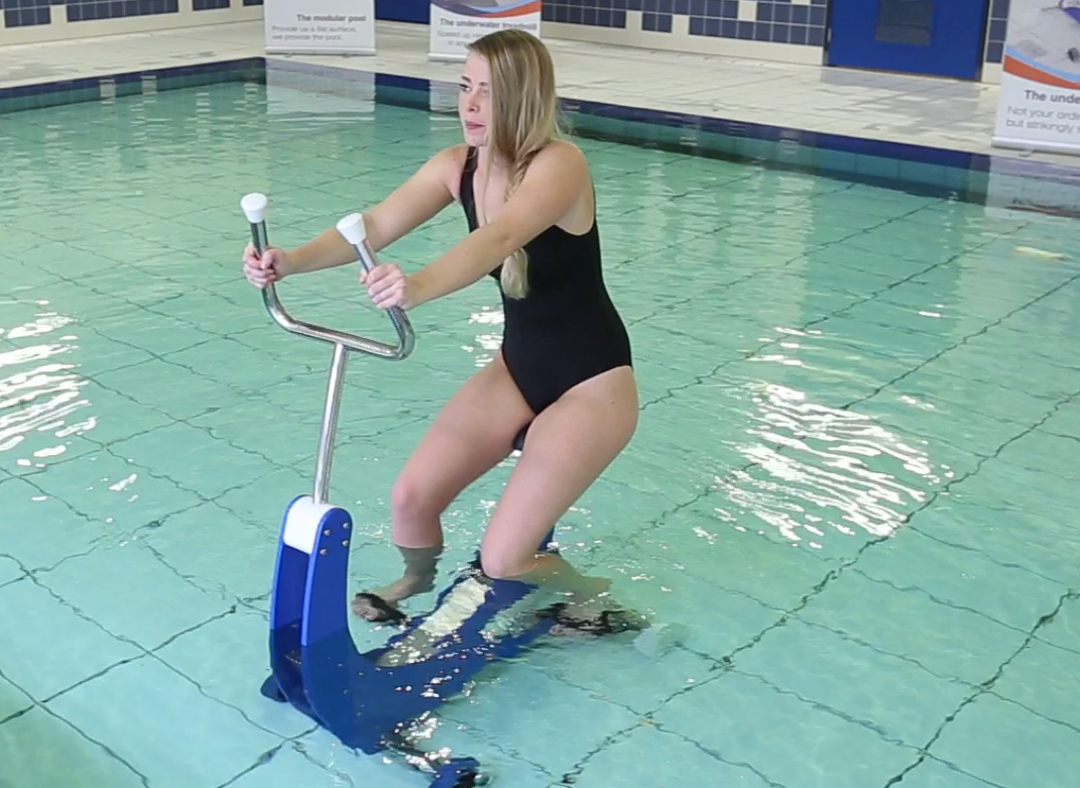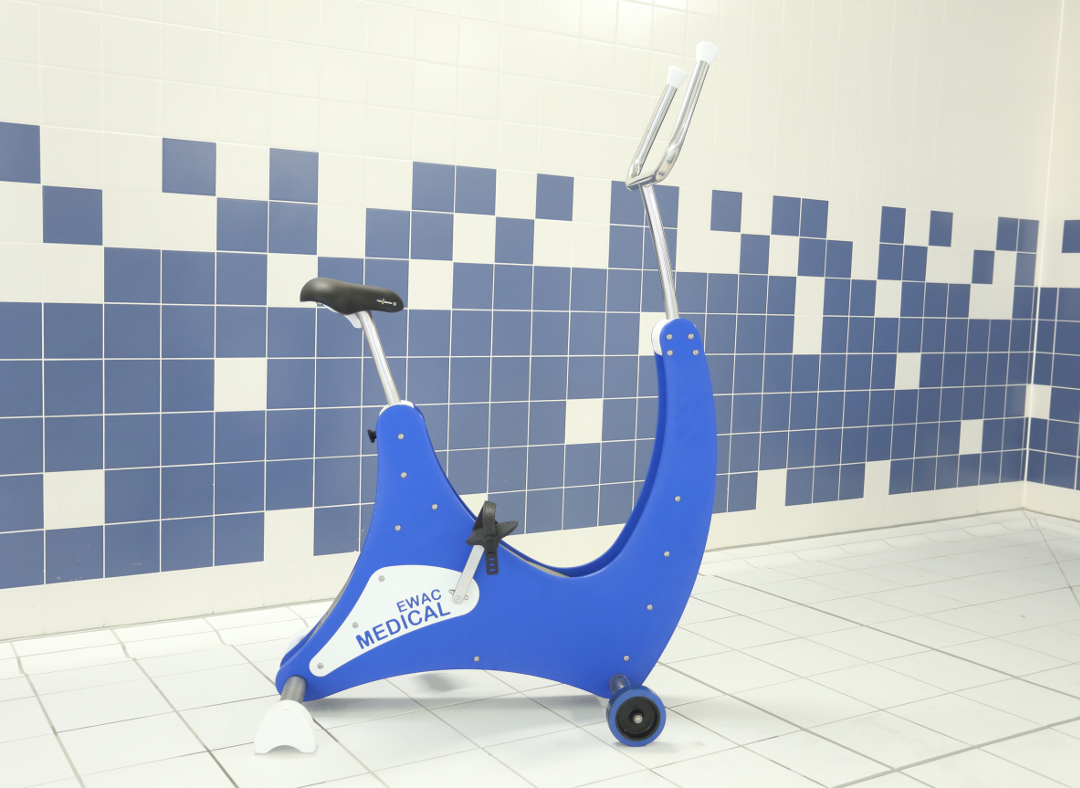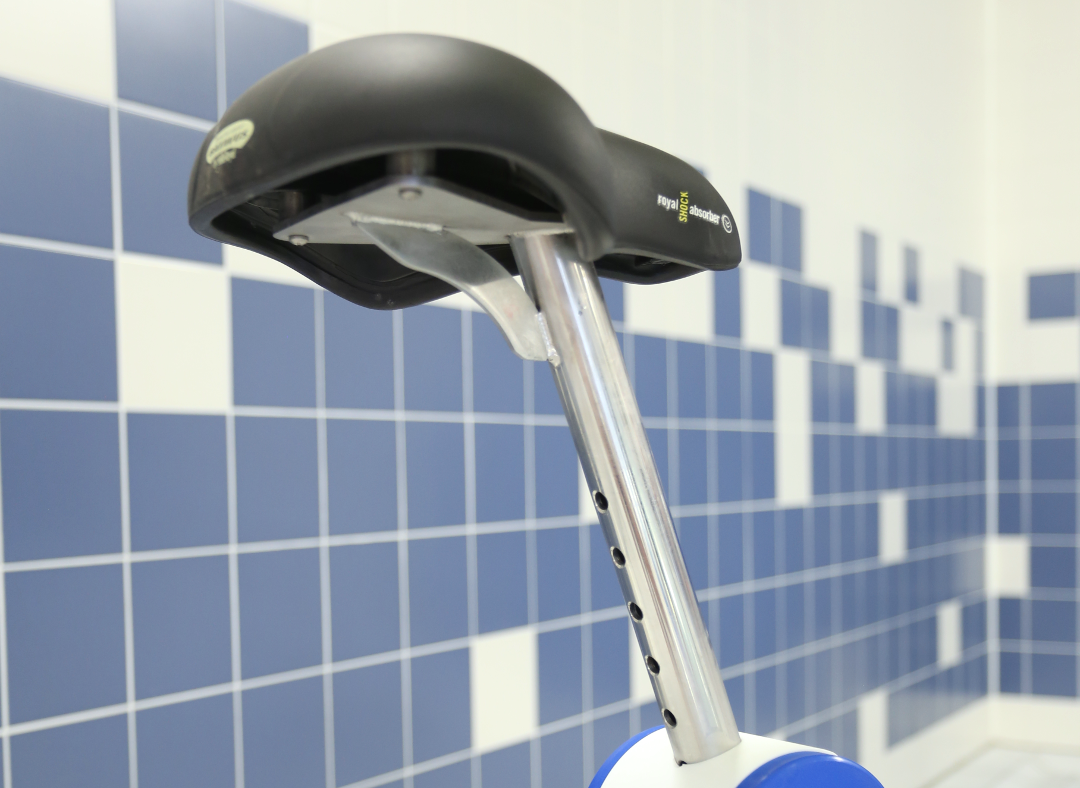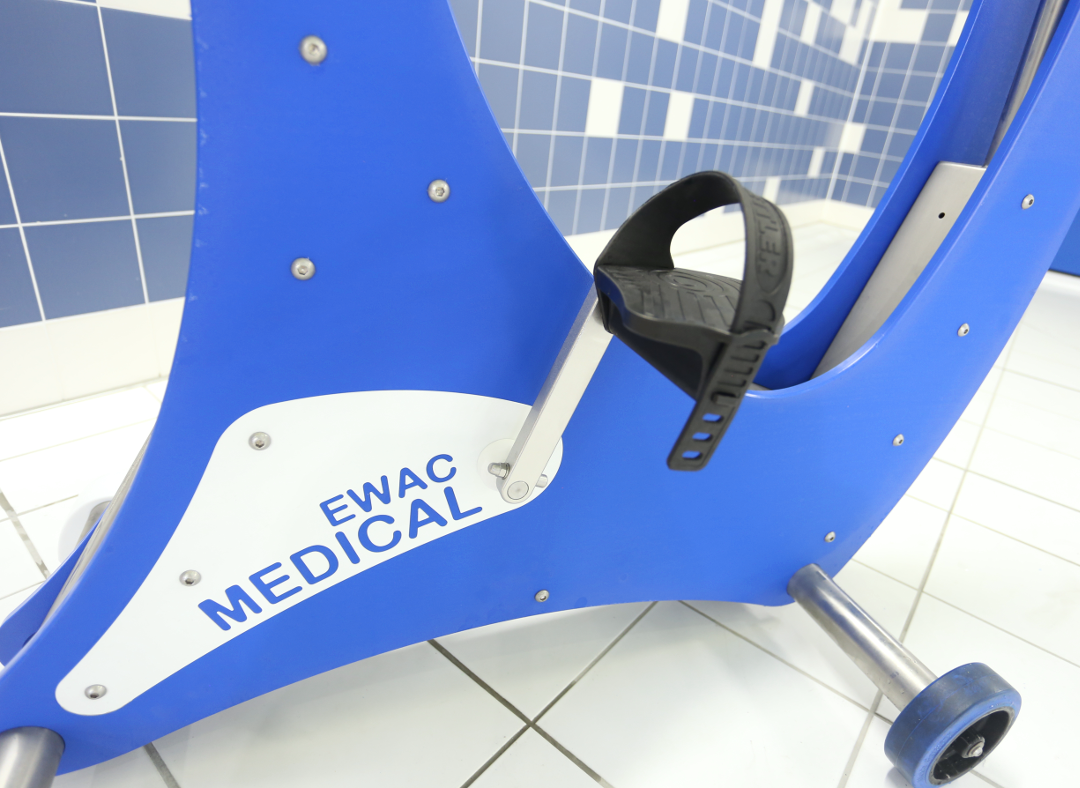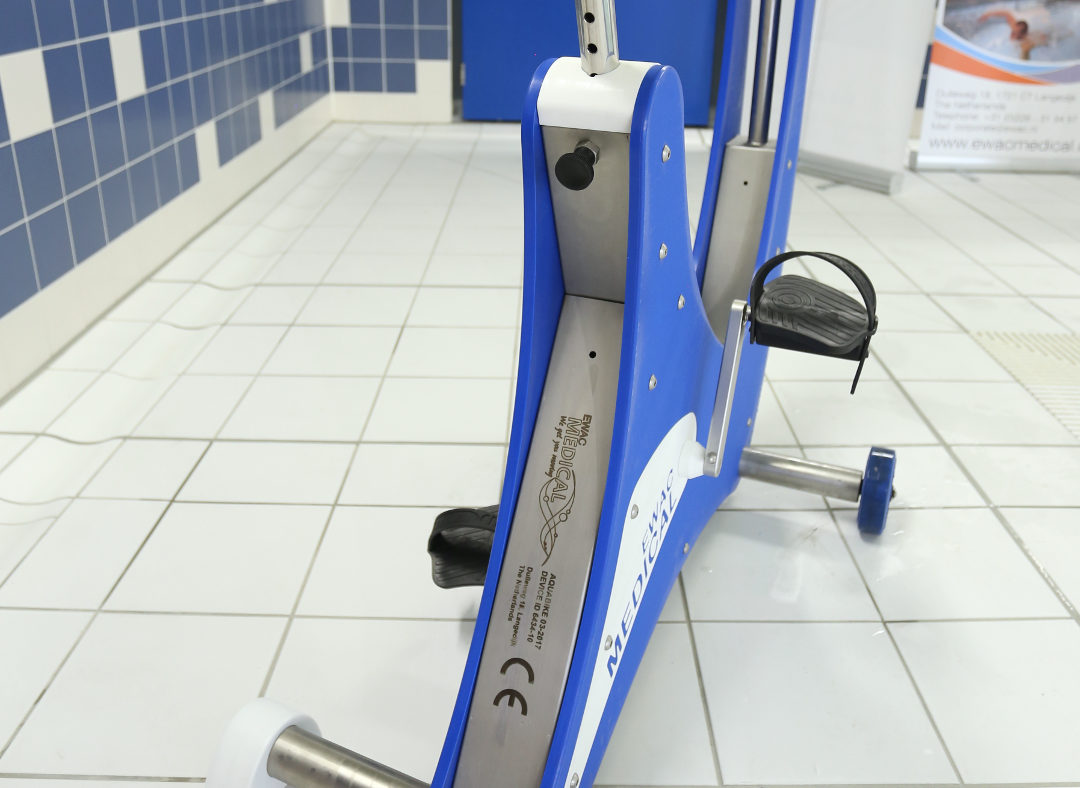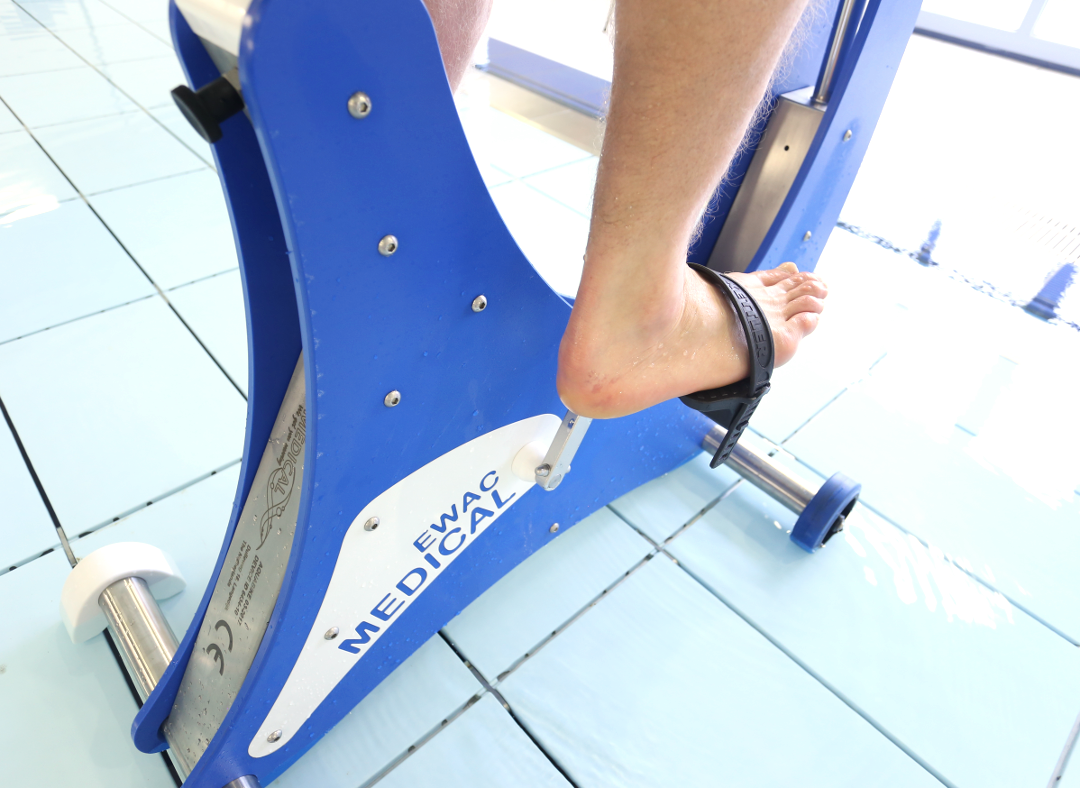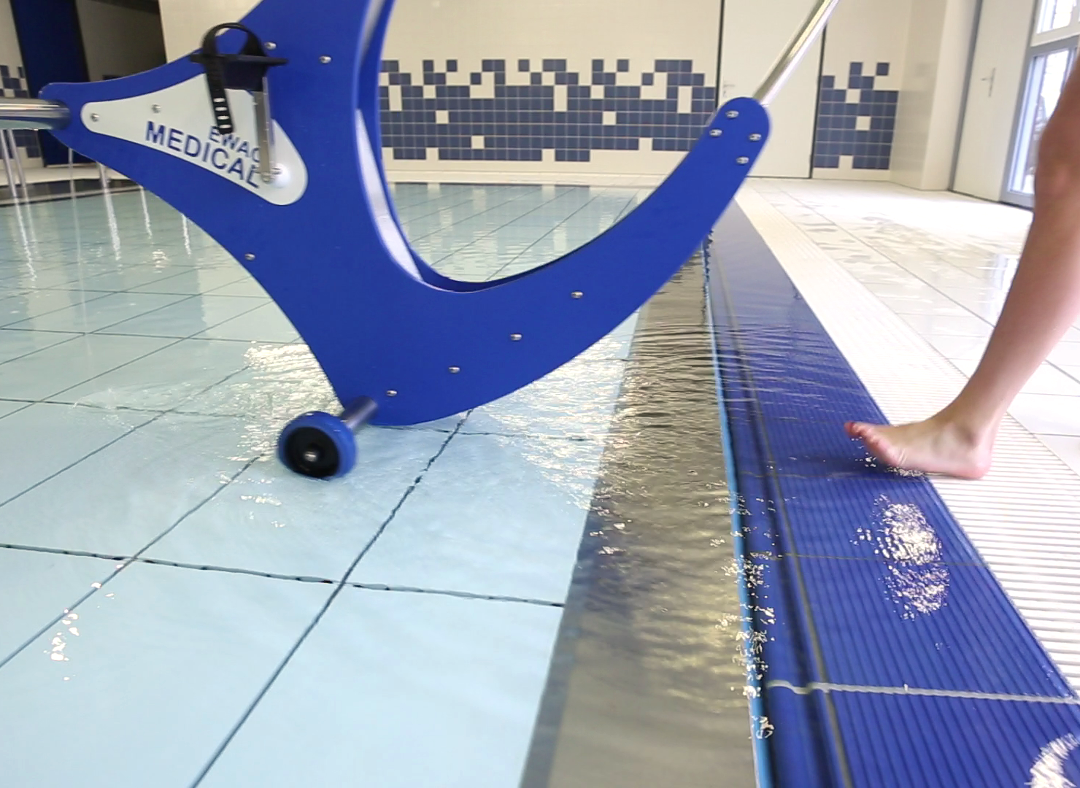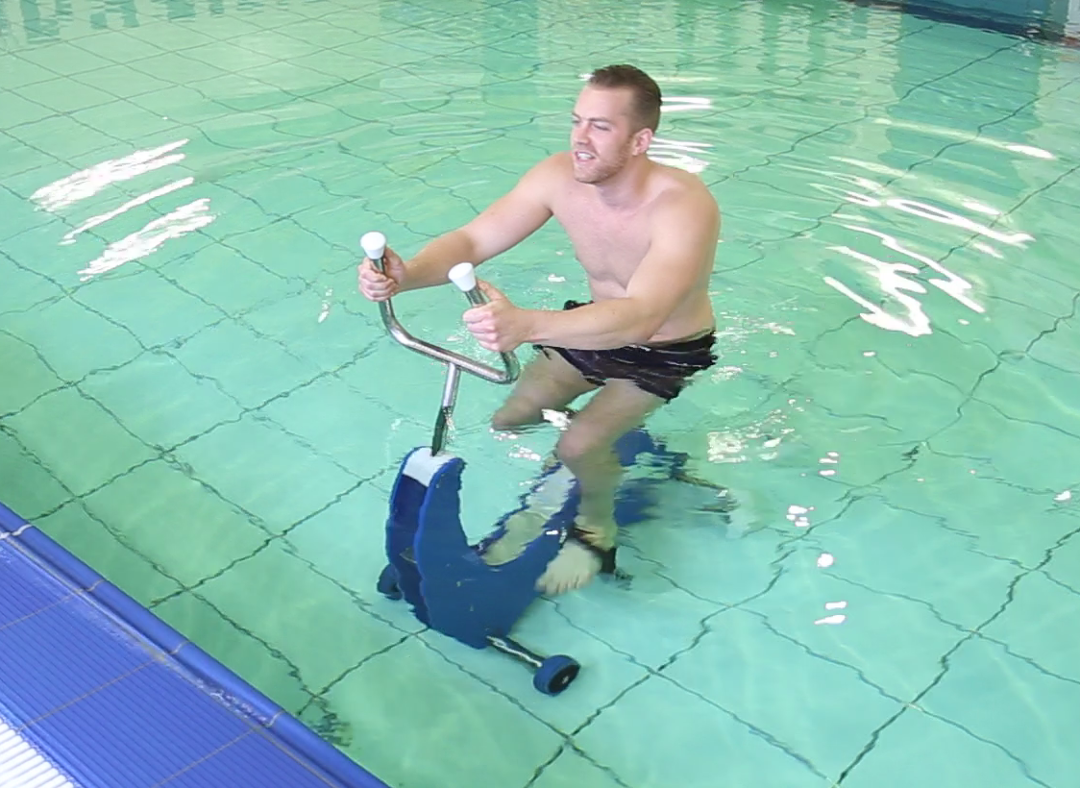The EWAC Underwater Bicycle is designed for cycling exercises in water for rehabilitation purposes. It is equipped with a unique resistance mechanism, which causes resistance to increase exponentially with the cycling speed. The frame is made of polished 316 stainless steel and therefore suitable for use in a therapy pool.
The unique resistance mechanism closely resembles the conditions actual cycling. Increasing speed takes a considerable effort. Slowing down, the inertia gives the sensation the bike is still going. The resistance increases exponentially with velocity.
Exercising in water increases the efficiency of the heart and because of the heat conductivity; the body is easily cooled while the connective tissue becomes more flexible. Water is a safe and low impact exercise environment. The underwater bicycle is an excellent tool for rehabilitation as well as combatting obesity.
